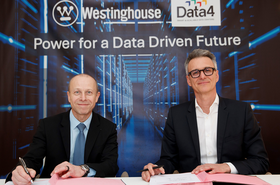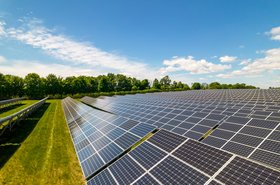As technology advances, the data center industry continues to grow at an unprecedented rate. Professionals in the field, including those that have been operational for several decades, acknowledge that such rapid growth has not been observed for at least 20 to 30 years! This expansion has been particularly pronounced in Europe, and demand is slated to skyrocket in the near future.
At Data4, we are predicting an annual growth of 30 percent, as well as a fourfold increase in our platform’s capacity over the next six years. Within just four years, our power capacity has risen from 10 MW per year to an expected 100 MW as of 2025. The challenges we are facing are considerable and require a new, extremely rigorous, and strategic approach.
Planning and industrialization: Key success factors
Efficient planning is a key priority in the face of this exponential growth. We can only achieve this by listening carefully to our customers, who provide us with insights into the market and its current requirements. We must adopt a tangible, hands-on approach in which we analyse the ecosystem, from suppliers to customers, to anticipate production and adaptation capacities.
Industrialization is also playing a major role. Working in partnership with key stakeholders in positions of leadership in their markets allows us to optimise our processes and be more operationally efficient. Building a more agile and resilient production line is essential if we are to keep pace with this high demand.
Environmental issues: Our collective responsibility
One of the most pressing concerns surrounding data center growth involves reducing the environmental footprint. Digital technology currently accounts for around four percent of global carbon emissions, including 16 percent attributed to data centers.
Aware of this impact, we joined forces with our Italian partner Generale Prefabbricati, a leading manufacturer of precast reinforced and prestressed concrete throughout Italy, to initiate a low-carbon concrete strategy that has already helped us reduce our carbon footprint by 13 percent since 2012. In 2023, we recorded a further decrease of 2.3 percent per MW. We are continuing in this direction by exploring new low-carbon solutions, particularly for foundations and construction materials.
Energy efficiency also remains a critical issue. Over the past 10 years, we have increased the energy performance of data centers by 25 percent by optimising their design. Today, we are achieving a good level of energy efficiency with a power usage effectiveness (PUE) of 1.2/1.3, which is the optimal standard at the European level.
The talent war: The strategic challenge of finding and retaining skilled professionals
Beyond infrastructure and technology, one of the main challenges we are facing is talent scarcity. In the last two years, the shortage of talent has led to intense competition among operators, suppliers, and customers, all vying for the same skills.
Against this backdrop, we need to rethink our approach to recruitment and training. The aim is not simply to attract talented professionals to our company – we need to work on developing the skills of our entire ecosystem. Teaming up with partners and suppliers to build a pool of qualified individuals has become an absolute necessity.
Building the future of data centers together
The sector’s transformation depends on synergies between growth, innovation, and environmental responsibility. In this context, we are well aware that all our strategic partnerships with the very best suppliers in their fields are vital for lasting success.
The future promises to be even more ambitious: A new 120 MW campus will be delivered within the next four years, and the next generation of data centers, with capacities of up to 75 MW, will require an innovative approach to design and engineering.
We are at a turning point in history. Together, we can build a future where data centers are not just expanding but are evolving in more controlled, sustainable, and collaborative ways. Our common duty is to shape the future of data infrastructure by combining performance, innovation, and social responsibility.
More from Data4
-

Data4 signs nuclear SMR deal with Westinghouse
Brookfield-owned data center firm to deploy an AP300 SMR at a future facility
-

Data4 signs ten-year PPA with Edison Energia for 500GWh of solar power in Italy
The PPA will cover 10 percent of Data4's energy consumption in Italy
-

Sponsored Data center operators are key to creating a sustainable digital economy
How we reinvent our business model, marrying technological innovation with a focus on environmentally responsible development

